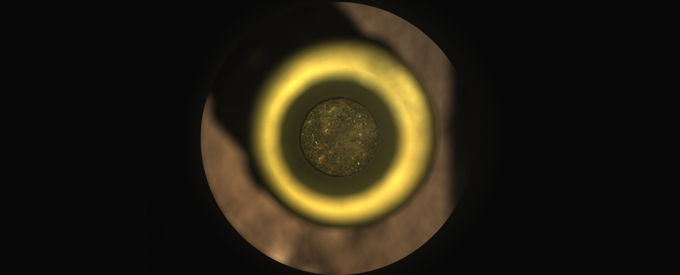2021-10-01
Perseverance Pays Off as NASA Picks up Mars Rock Samples
Braving geographical barriers, the U.S. National Aeronautics and Space Administration’s (NASA) Perseverance Mars rover has charted history by successfully collecting its first pair of rock samples and the accomplishment will help scientists gain new insights into the geology of Mars and signs of ancient life on the red planet.
After collecting its first sample, named “Montdenier,” on Sept. 6, the team collected a second, “Montagnac,” from the same rock on Sept. 8.
The first sample of the Martian rock was a core from Jezero Crater slightly thicker than a pencil. Mission controllers at NASA’s Jet Propulsion Laboratory (JPL) in California received data that confirmed the historic milestone. The rock core is enclosed in an airtight titanium sample tube, and will be available for retrieval in the future.
The rover’s earlier attempt to collect a rock sample and seal it in a sample tube had apparently failed.
Analysis of the rocks from which the Montdenier and Montagnac samples were taken and from the rover’s previous sampling attempt may help the science team piece together the timeline of the area’s past, which was marked by volcanic activity and periods of persistent water.
Ken Farley of Caltech, project scientist for the mission, pointed out: “It looks like our first rocks reveal a potentially habitable sustained environment. It’s a big deal that the water was there a long time.”
The puzzle pieces of Mars’ history are visibly unravelling. The rock that provided the mission’s first core samples is basaltic in composition and may be the product of lava flows. The presence of crystalline minerals in volcanic rocks is helpful in radiometric dating. The volcanic origin of the rock could actually help scientists accurately date when it formed.
Each sample can serve as part of a larger chronological puzzle; put them in the right order, and scientists have a timeline of the most important events in the crater’s history. Some events include the formation of Jezero Crater, the emergence and disappearance of Jezero’s lake, and changes to the planet’s climate in the ancient past.
Salts have been spied within these rocks. These salts may have formed when groundwater flowed through and altered the original minerals in the rock, or more likely when liquid water evaporated, leaving the salts. The salt minerals in these first two rock cores may also have trapped tiny bubbles of ancient Martian water. If present, they could serve as microscopic time capsules, offering clues about the ancient climate and habitability of Mars. Salt minerals are also well-known on Earth for their ability to preserve signs of ancient life.
The Perseverance team already knew a lake once filled the crater; for how long has been uncertain. The scientists couldn’t dismiss the possibility that Jezero’s lake was a “flash in the pan”: floodwaters could have rapidly filled the impact crater and dried up in the space of 50 years, for example.
The level of alteration that scientists see in the rock that provided the core samples – as well as in the rock the team targeted on their first sample-acquisition attempt – suggests that groundwater was present for a long time.
This groundwater could have been related to the lake that was once in Jezero, or it could have travelled through the rocks long after the lake had dried up.
Mitch Schulte of NASA Headquarters, the mission’s programme scientist, explained: “These samples have high value for future laboratory analysis back on Earth. One day, we may be able to work out the sequence and timing of the environmental conditions that this rock’s minerals represent.”
Next Sample Site
Perseverance is currently searching the crater floor for samples that can be brought back to Earth.
It will likely create multiple “depots” later in the mission, where it will drop off samples for a future mission to bring to Earth. Perseverance’s next likely sample site is just 200 metres away in “South Séítah,” a series of ridges covered by sand dunes, boulders, and rock shards that Farley likens to “broken dinner plates.”
By October, all Mars missions will be standing down from commanding their spacecraft for several weeks, a protective measure during a period called Mars solar conjunction.
The Sun expels hot, ionised gas from its corona, which extends far into space. During solar conjunction, this gas can interfere with radio signals when engineers try to communicate with spacecraft at Mars, corrupting commands and resulting in unexpected behaviour from deep space explorers.
A key objective for Perseverance’s mission on Mars is astrobiology, the study of the origin, evolution, and distribution of life in the universe.
The rover will characterise the planet’s geology and past climate, pave the way for human exploration of the Red Planet, and be the first mission to collect and cache Martian rock and regolith – broken rock and dust.
Reference Text/Photo:


No Comments